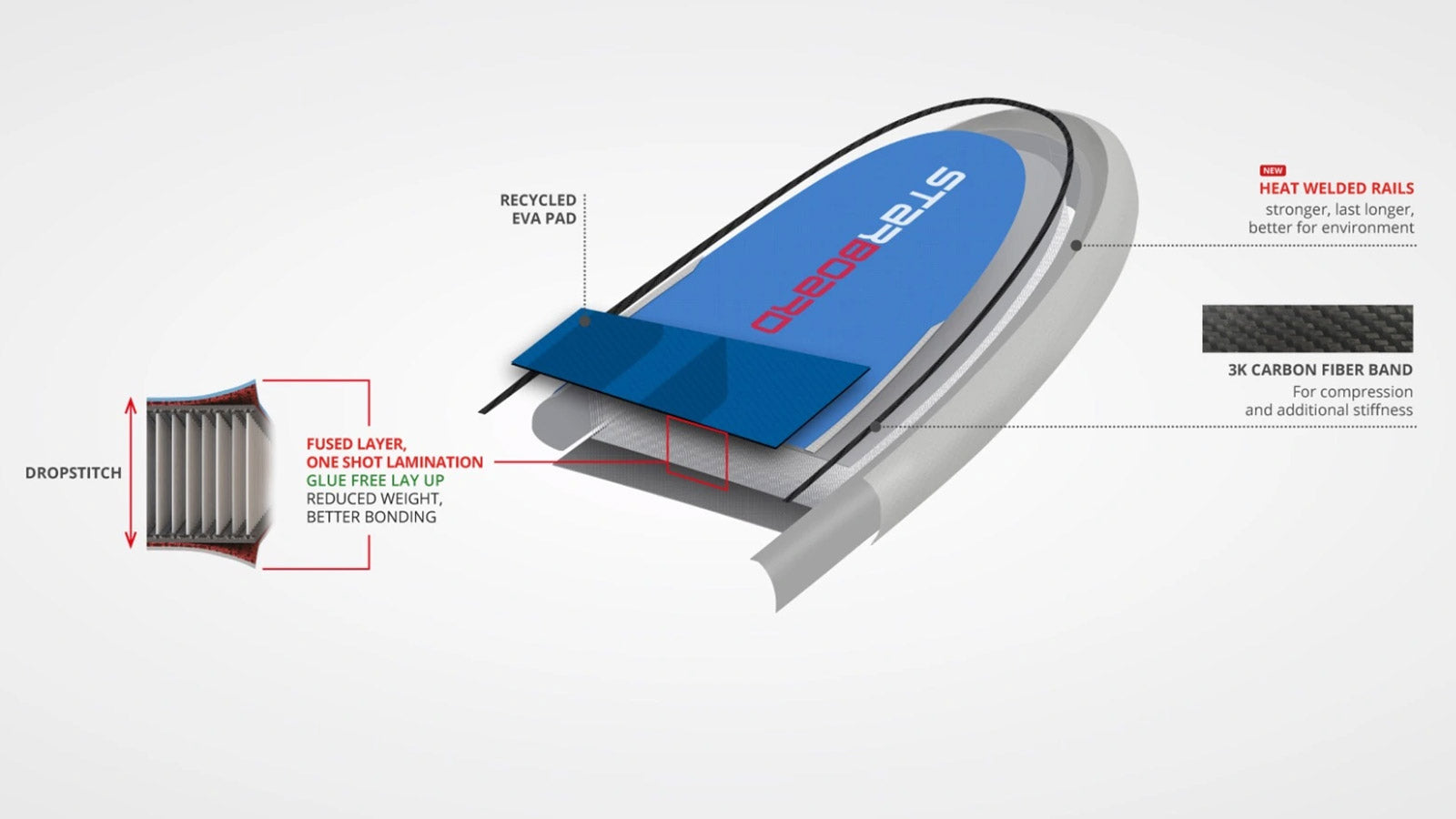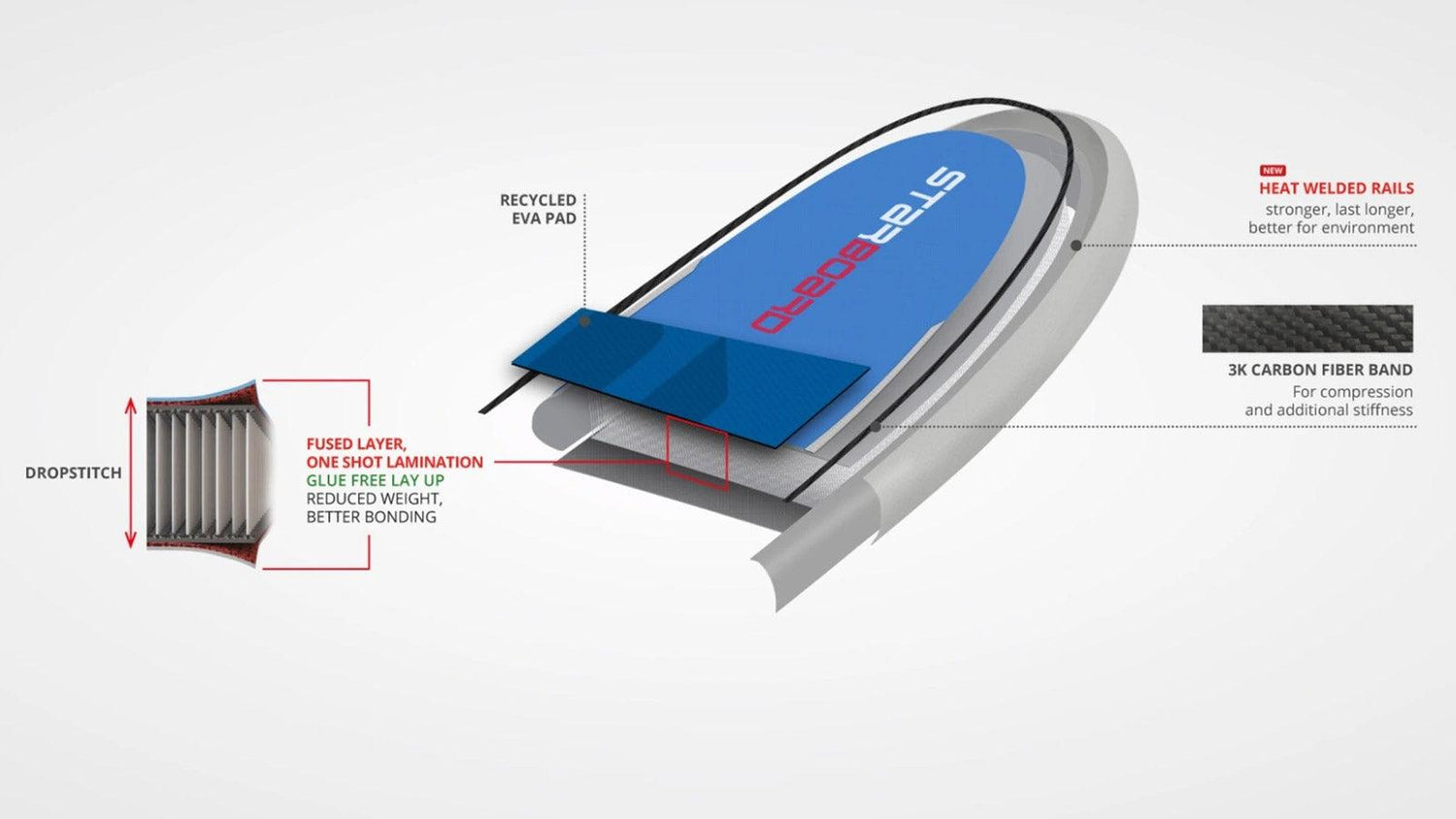Where does the price range come from on inflatable stand up paddle boards?
We regularly offer test events for our customers. Many have paddled a board before - from a rental company, from a friend or bought a "discounter board". Everyone asks themselves whether SUPs that cost 800 €, 1000 € or even 1,400 € are really that much better than those for 300 - 400 € in the hardware store or supermarket. In principle, they all look the same...
In order to understand the differences, we would like to give you some information about the structure and processing of inflatable SUPs.
What actually makes inflatable stand up paddle boards stable?
For a board to be paddleable, it has to be stiff and support the rider(s). Also, it must not become round like a bicycle tube when you inflate it. To understand how this is possible, let's take a look inside an iSUPs:

The two large outer surfaces of the board - the deck and the floor - are held together by many threads. This is the "drop stitch technology" used in all iSUPs currently on the market. These threads hold the skin together so that it does not form into a ball or round tube when inflated. They have to be able to permanently withstand a tensile load due to the required 1 bar pressure. The threads must not tear, must not wear out and they must remain firmly attached to the outer skin. There are big differences in:
- the quality of the threads and the base layer itself
- the technique used to connect the threads to the base layer
Differences in these two points result in significant quality differences in terms of stiffness and, above all, durability of the board.
Light or heavy
The carrier material for the dropstitch is additionally covered with additional layers. So there is e.g. B. "double layer" or "single layer" constructions, which not least cause differences in the weight of the board. If the board is quickly processed and built on cheap material, it cannot be exceptionally light, dimensionally stable and durable at the same time.
Does the glue stick?
The adhesive that connects the individual parts of the outer skin with each other, like the threads, must also be able to withstand the pressure caused by inflation. In addition, these adhesive connections are also exposed to pressure differences due to environmental influences: when the sun is warm, the pressure increases and the material becomes soft. In principle, iSUPs should not be left in the sun for a long period of time under full pressure, but a cheap adhesive definitely has a negative effect on the durability of the "seams".
Some manufacturers now also use one Technology that welds the different PVC strips and no longer glues them together. This also works very well and reliably. The pioneer here was Starboard.
Technical innovation and processing details for more driving pleasure
Brand manufacturers who have been producing boards in this area for many years have a technical evolution in their products that affects handling: Details such as reinforced rails for more robustness, stringers for rigidity, 2 air chamber systems for more rigidity and much more are points that influence the fun of riding and bring more joy in the long term.
Our conclusion: If a board has been processed very cheaply, this has an effect on durability, but also on handling. On your next visit to the beach, pay attention to how many are on boards that bend in the middle. As a result, the tip comes out of the water, the board no longer lies flat on the water surface and thus loses a lot of smoothness. Paddling also becomes inefficient, since the power transmission of the paddle strokes no longer fully reaches the water surface.
Basically, with a cheap board you buy a product that you can paddle with. This may work for starters or for occasional use. In our opinion, this does not buy you the fun of riding and long-term enjoyment of a great board.
For more information about stand up paddling and kayaks, follow us on Facebook and Instagram. We regularly post product images, announcements of our test events, offers, and trivia like this post here.

